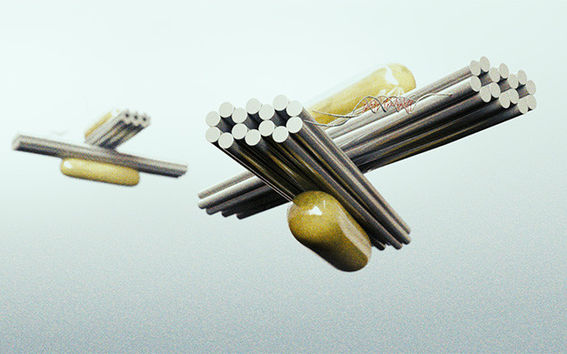Self-assembled nanostructures can be selectively controlled

Plasmonic nanoparticles exhibit properties based on their geometries and relative positions. Researchers have now developed an easy way to manipulate the optical properties of plasmonic nanostructures that strongly depend on their spatial arrangement.
The plasmonic nanoparticles can form clusters, plasmonic metamolecules, and then interact with each other. Changing the geometry of the nanoparticles can be used to control the properties of the metamolecules.
“The challenge is to make the structures change their geometry in a controlled way in response to external stimuli. In this study, structures were programmed to modify their shape by altering the pH,” tells Assistant Professor Anton Kuzyk from Aalto University.
Utilization of programmable DNA locks
In this study plasmonic metamolecules were functionalized with pH-sensitive DNA locks. DNA locks can be easily programmed to operate at a specific pH range. Metamolecules can be either in a “locked” state at low pH or in relaxed state at high pH. Both states have very distinct optical responses. This in fact allows creating assemblies of several types of plasmonic metamolecules, with each type designed to switch at different a pH value.
The ability to program nanostructures to perform a specific function only within a certain pH window could have applications in the field of nanomachines and smart nanomaterials with tailored optical functionalities.
This active control of plasmonic metamolecules is promising for the development of sensors, optical switches, transducers and phase shifters at different wavelengths. In the future, pH-responsive nanostructures could also be useful in the development of controlled drug delivery.
The study was carried out by Anton Kuzyk from Aalto University, Maximilian Urban and Na Liu from Max Planck Institute for Intelligent Systems and the Heidelberg University, and Andrea Idili and Francesco Ricci from the University of Rome Tor Vergata.
More information:
Anton Kuzyk
Assistant Professor
Aalto University
[email protected]
tel. +358 50 443 0492
Article: Selective control of reconfigurable chiral plasmonic metamolecules
- Published:
- Updated:
Read more news

Aalto Open Science Award ceremony brought together Aaltonians to discuss open science
Last week we gathered at A Grid to celebrate the awardees of the Aalto Open Science Award 2023 and discuss open science matters with the Aalto community.
Seed funding available to boost collaboration between Aalto, KU Leuven and University of Helsinki
Aalto University, KU Leuven and the University of Helsinki launch the 2nd exploratory seed funding call to explore research collaboration possibilities. The funding call is open until 10 September 2024.
Professor Peter Hans Matthews works as a Fulbright-Aalto Distinguished Chair scholarship holder at the Department of Economics
Fulbright programmes and scholarships are highly appreciated in the United States